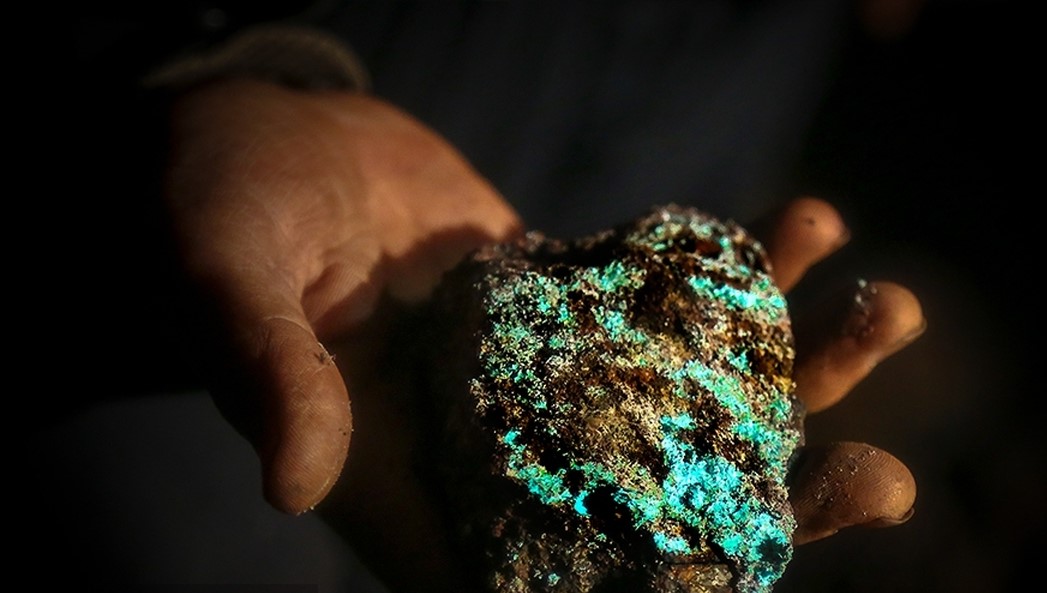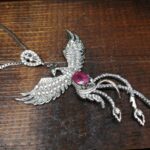
The Symbolism of Birds in Iranian Jewelry
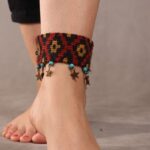
The Role of Persian Carpets in Jewelry Design
Persian turquoise, particularly from the Neyshabur mines in northeastern Iran, is world-renowned for its striking color and historical significance. Known for its unique blue hues and rich cultural heritage, Persian turquoise has been prized for thousands of years and is often used in jewelry, art, and decorative objects. However, with its popularity comes the challenge of identifying genuine and high-quality turquoise. Whether you are buying Persian turquoise jewelry or looking to add loose stones to your collection, knowing how to spot the best-quality turquoise is essential.
In this guide, we’ll explore the key factors that help buyers choose the best quality Persian turquoise, including color, matrix, treatment, and craftsmanship.
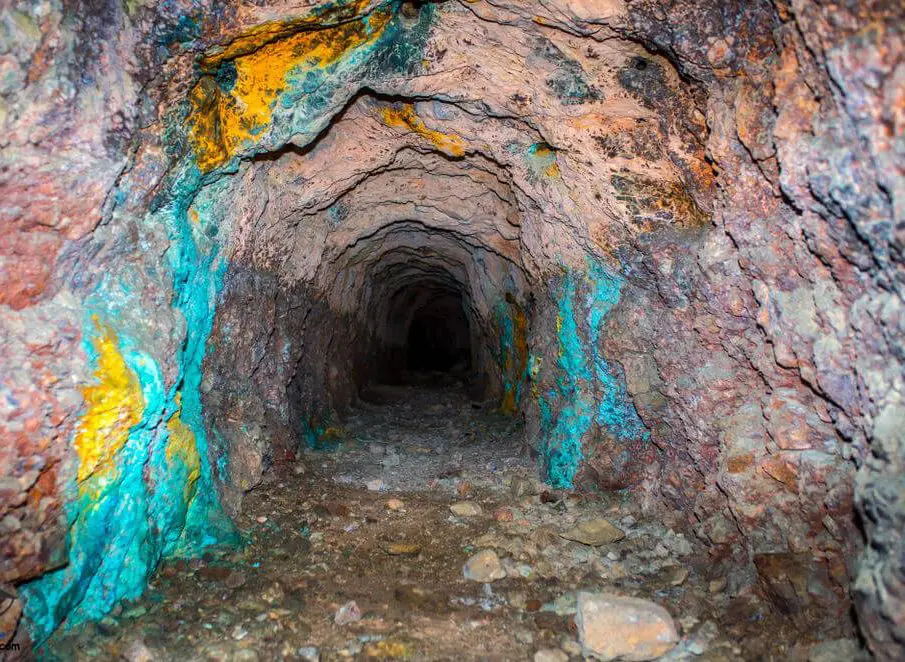
Neyshabur turquoise mine
1. Understanding the Significance of Persian Turquoise
Persian turquoise has been revered since ancient times and remains one of the most sought-after varieties of turquoise in the world. Neyshabur turquoise, mined in the Neyshabur region, is famous for its pure sky-blue color, which distinguishes it from other types of turquoise found globally. Turquoise from Iran is often considered the finest due to its clarity, vibrant color, and lack of impurities.
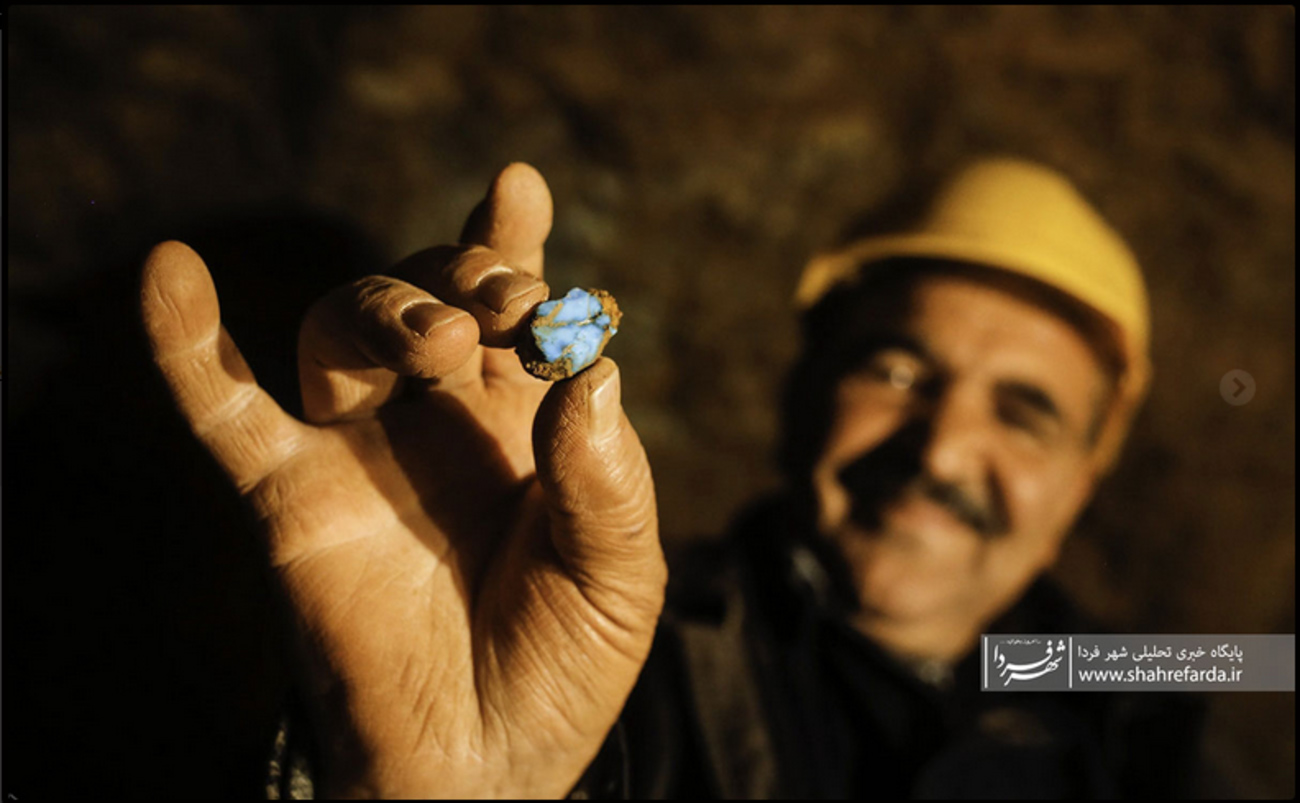
Neyshabur turquoise mine
Why Persian Turquoise is Special
- Historical Value: Persian turquoise has a deep-rooted history in Persian culture, where it is believed to bring protection, good fortune, and spiritual balance.
- Color Quality: The hallmark of high-quality Persian turquoise is its rich, deep blue color, sometimes with slight green undertones.
- Durability: Persian turquoise is known for being relatively dense and durable, making it less prone to fading and damage compared to lower-quality turquoise from other regions.
2. Color: The First Indicator of Quality
The color of turquoise is the most important factor when determining its quality. High-quality Persian turquoise is famous for its pure blue hue, often referred to as “robin’s egg blue” or “sky blue”. In general, the more vivid and intense the blue, the more valuable the stone.
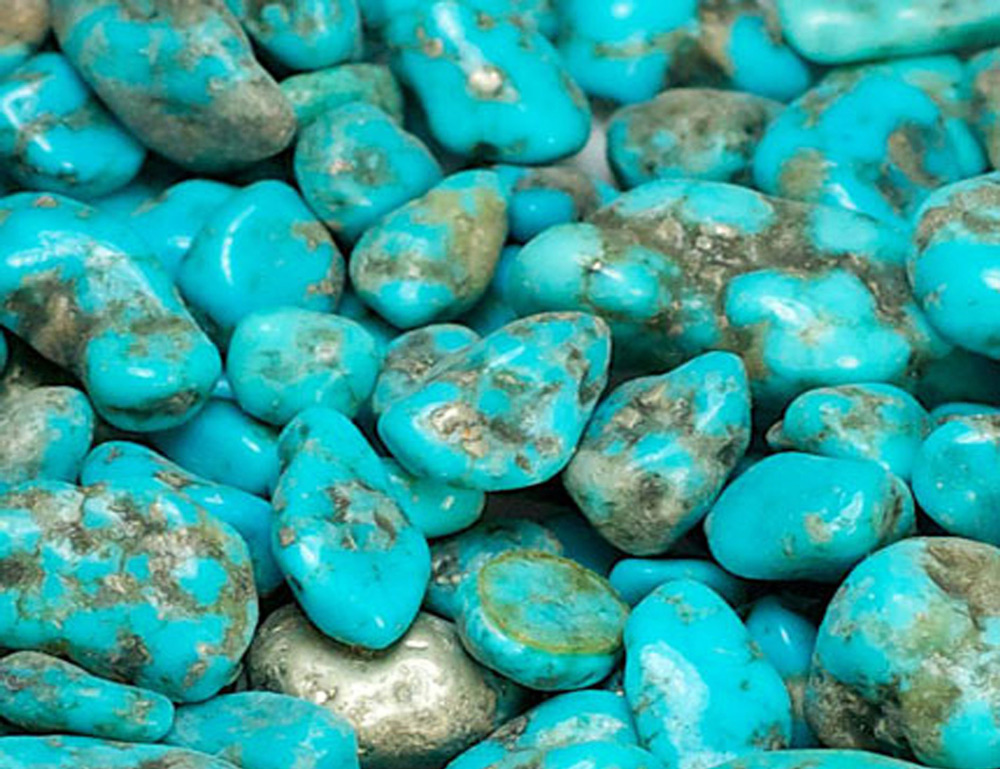
Turquoise (Firouzeh):
What to Look for in Color
- Rich Sky Blue: The most sought-after Persian turquoise is a vibrant, pure sky blue without greenish tones. The absence of green indicates the stone has a low level of iron impurities, which is a sign of higher quality.
- Even Color Distribution: High-quality turquoise has an even color throughout the stone. Avoid pieces with patchy or uneven color, as this can indicate lower quality or artificial treatment.
- Slight Green Hues: While pure blue is the most valuable, some Persian turquoise may have slight green undertones. This is still considered good quality, but the stone’s value might be slightly lower than pure blue specimens.
3. Matrix: The Stone’s Natural Veining
The matrix refers to the natural veining or inclusions found in turquoise. These veins are the remnants of the rock in which the turquoise formed and can vary in color from brown to black. Some buyers prefer turquoise with no matrix, while others appreciate the character that the matrix adds.
Types of Matrix in Persian Turquoise
- Spiderweb Matrix: High-quality Persian turquoise often features a spiderweb matrix, a fine network of thin, well-distributed black or brown veins. This pattern is highly prized and can add to the stone’s beauty and value.
- No Matrix (Clear Stones): Some Persian turquoise stones are completely free of matrix, which is considered a sign of exceptional quality. Clear, matrix-free stones are highly valued for their purity and vibrant color.
- Irregular Matrix: Lower-quality turquoise may have thick or uneven veining, which can detract from the stone’s aesthetic. When buying, look for stones where the matrix enhances the beauty of the turquoise rather than overwhelming it.
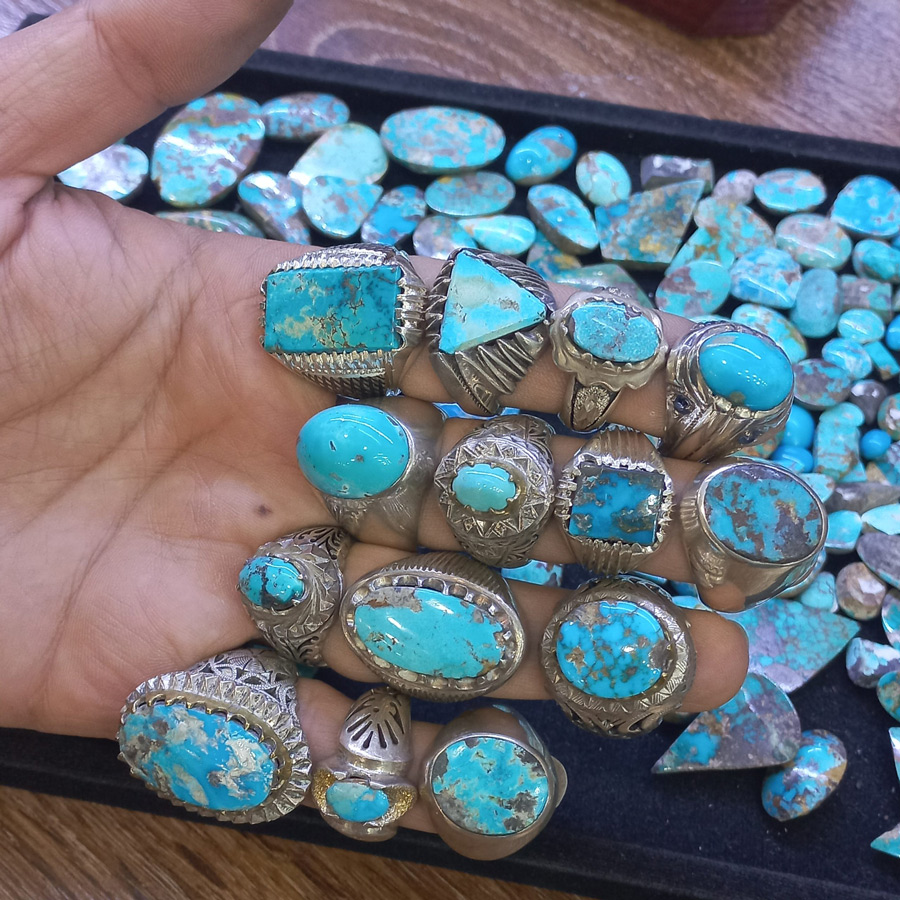
Turquoise Rings
4. Treatment: Natural vs. Enhanced Turquoise
Many types of turquoise, including Persian turquoise, are treated to improve their color and durability. However, natural, untreated turquoise is the most valuable. It’s important to know how the turquoise has been treated before making a purchase, as treated stones are less valuable than natural ones.
Types of Treatments
- Natural (Untreated) Turquoise: The best-quality Persian turquoise is untreated and retains its natural beauty. It has not been stabilized, dyed, or enhanced, making it highly prized by collectors and jewelry makers.
- Stabilized Turquoise: Lower-grade turquoise is often treated with resin to improve its durability and color. While stabilized turquoise is more durable and affordable, it is considered less valuable than untreated stones.
- Dyed Turquoise: Some turquoise stones are dyed to enhance their color. Dyed turquoise may look appealing at first, but the color can fade over time. Always ask if the turquoise has been dyed before purchasing.
- Reconstituted Turquoise: Reconstituted turquoise is made by grinding turquoise into a powder, mixing it with resin, and forming it into stones. This is the lowest-quality type of turquoise and should be avoided by serious buyers.
How to Identify Treated Turquoise
- Look for Uniform Color: If the turquoise looks overly uniform in color, it may have been dyed or treated. Natural turquoise typically has slight variations in tone, even if it’s high quality.
- Check the Price: Natural, untreated Persian turquoise is more expensive than treated varieties. If the price seems too good to be true, the stone is likely treated or of lower quality.
5. Durability: Hardness and Longevity
High-quality Persian turquoise is relatively hard and durable, making it less prone to scratches or fading. Turquoise is a relatively soft stone, rating between 5 and 6 on the Mohs hardness scale, so it’s important to handle it with care. However, the finest Persian turquoise is known for its density, which helps preserve its vibrant color and shape over time.
How to Check for Durability
- Hardness Test: Gently press a fingernail into the surface of the turquoise. If it leaves a mark, the stone is likely of lower quality. High-quality Persian turquoise should be dense enough to resist minor scratches.
- Weight: A denser stone will feel slightly heavier in the hand, indicating good quality. Lightweight stones are more likely to be lower-grade or reconstituted turquoise.
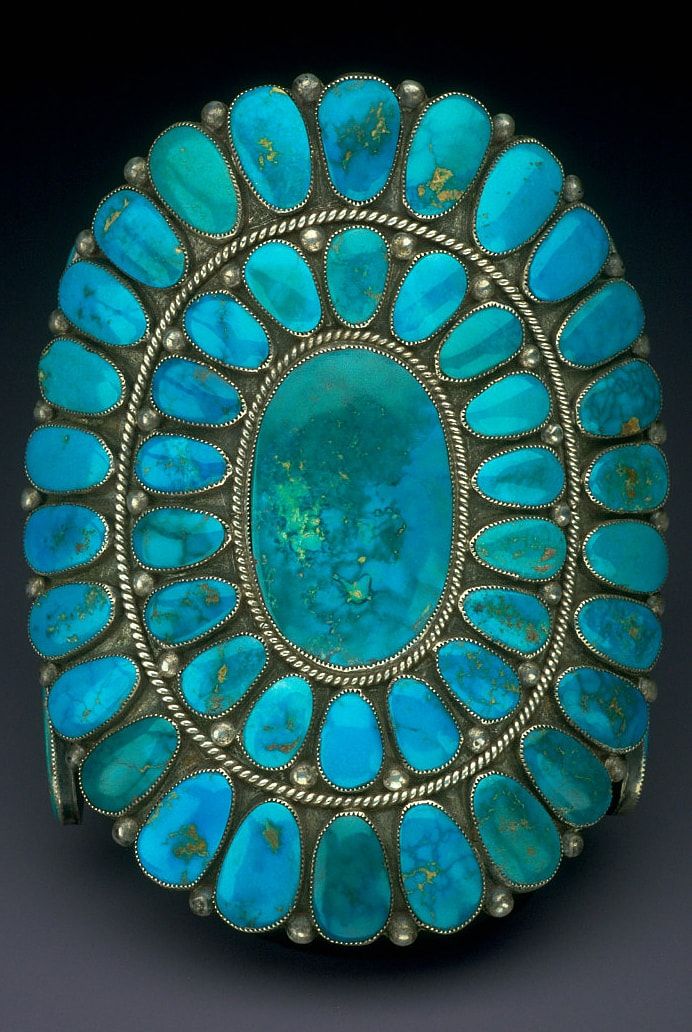
Smithsonian National Museum – Neyshabur Turquoise
6. Craftsmanship: The Final Touch
In addition to the stone’s quality, craftsmanship is a key factor in evaluating Persian turquoise jewelry. High-quality Persian turquoise jewelry should be well-crafted, with attention to detail in the setting and overall design. Whether set in silver or gold, the setting should complement the stone and reflect the skill of the artisan.
What to Look for in Craftsmanship
- Secure Setting: The turquoise should be set securely in its setting, without gaps or wobbling. This ensures that the stone is well-protected and will last over time.
- Polished Finish: The stone should have a smooth, polished finish that enhances its color and beauty. Look for a high-gloss polish, especially on natural stones.
- Artisan Details: Many Persian jewelry pieces are handcrafted by skilled artisans, with intricate details like engraving or filigree work. These details add to the beauty and value of the jewelry.
7. Certifications and Authenticity
When buying Persian turquoise, especially high-end pieces, it’s important to ensure the stone’s authenticity. Reputable sellers should provide certifications or guarantees that confirm the origin and quality of the stone. Always ask for documentation, especially for high-value pieces.
- Certificate of Authenticity: A certificate of authenticity should detail the stone’s origin (e.g., Neyshabur mines), whether it is natural or treated, and any significant features, such as its matrix or grade.
- Reputable Sellers: Buy from trusted sources with a history of selling genuine Persian turquoise. Research the seller’s reputation and ensure they provide clear information about the stone’s quality.
Conclusion: Choosing the Best Persian Turquoise
Persian turquoise is prized for its beauty, cultural significance, and rarity. To choose the best-quality stone, focus on factors such as color, matrix, treatment, durability, and craftsmanship. Whether you’re purchasing Persian turquoise jewelry or loose stones, understanding these key elements will help you make an informed decision and ensure that you acquire a piece that not only looks stunning but also holds lasting value.
At LetsGoYelo, we offer a curated selection of high-quality Persian turquoise jewelry, sourced from trusted artisans and crafted to reflect the rich tradition of Persian artistry. Explore our collection and find the perfect piece of Persian turquoise that matches your style and standards for quality!


